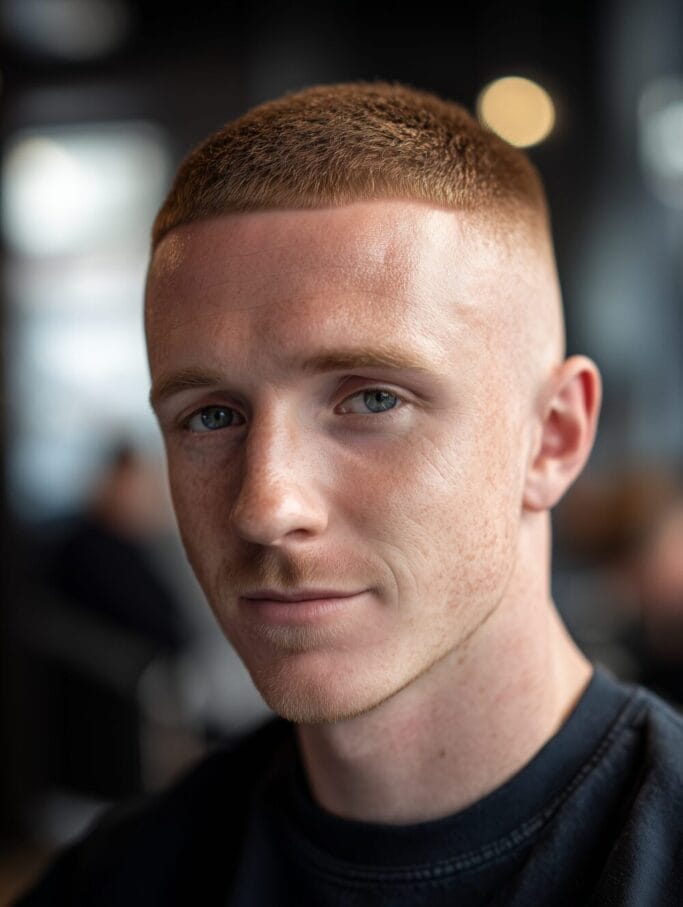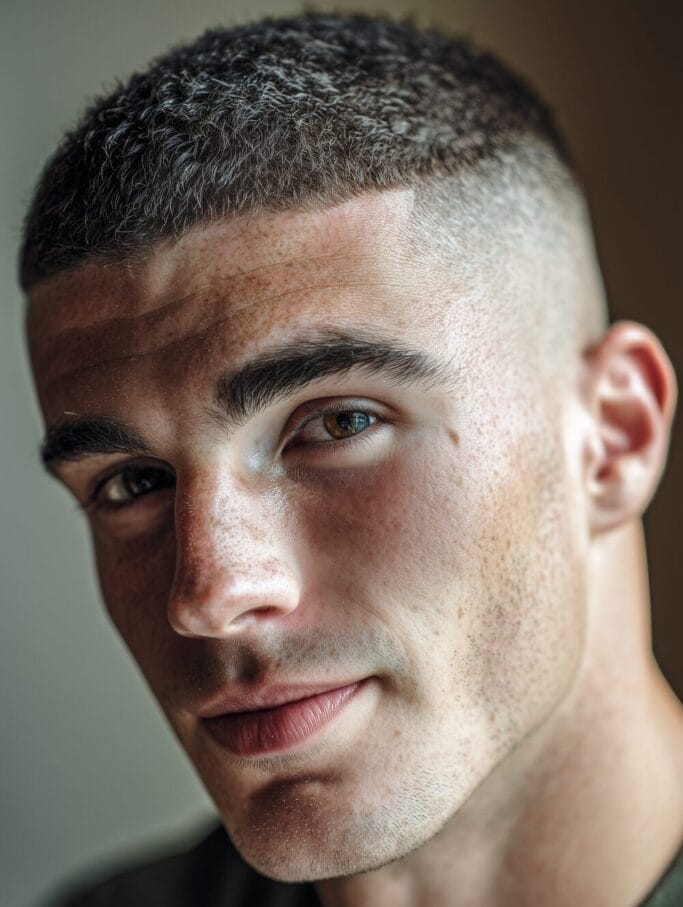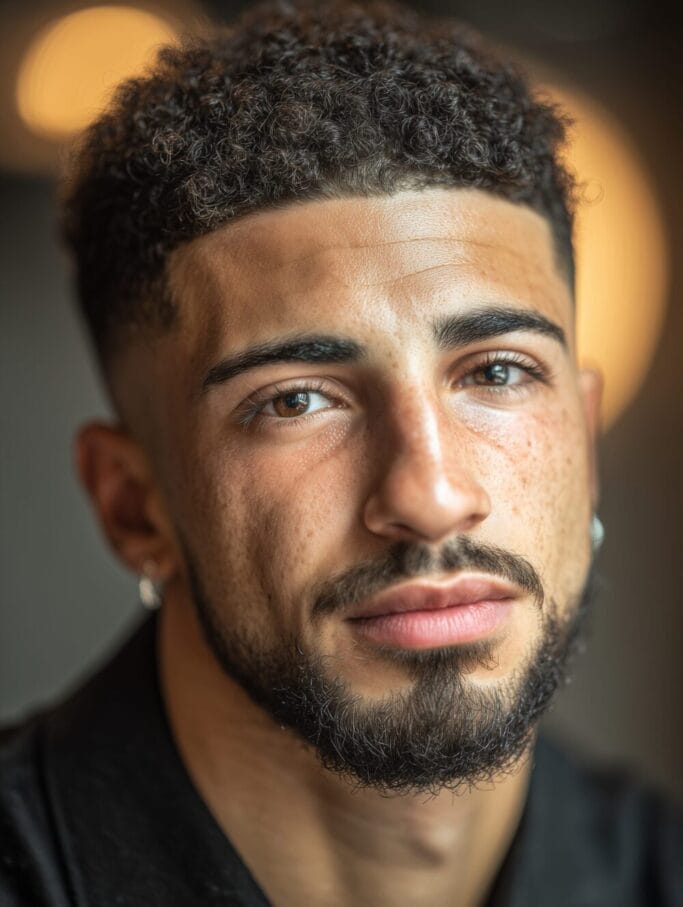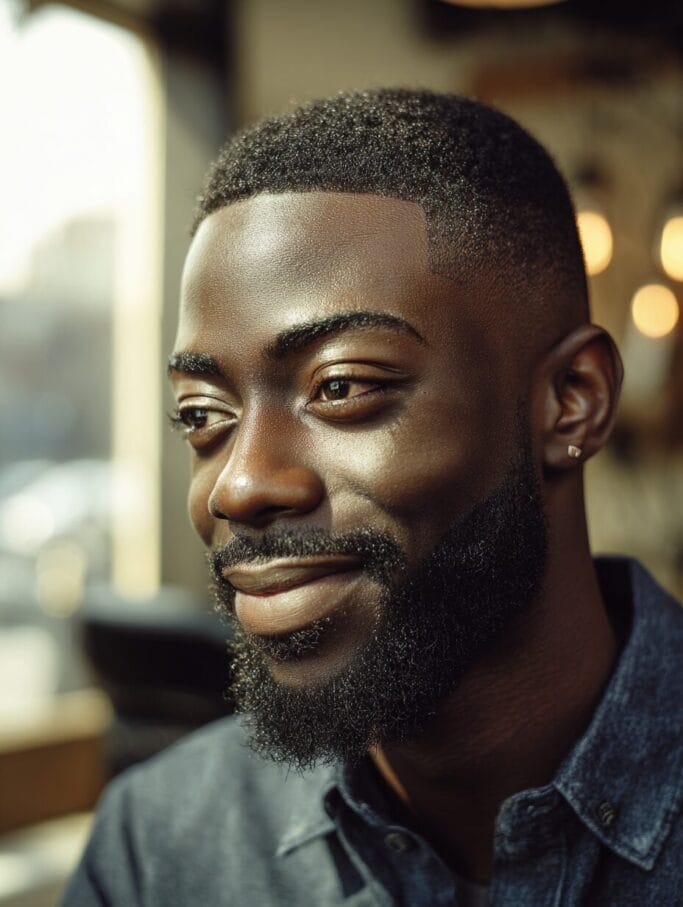Military Low Fade Haircut Ideas for a Sharp Clean Look
Think the cleanest men’s haircut is just about chopping it all off? Think again.
The military low fade isn’t just a cut—it’s a statement. It’s discipline and edge, precision and personality, all rolled into a sleek silhouette that always means business.
Whether you’re heading into the boardroom or the barbershop, this clean-cut style is your secret weapon. Rugged enough to feel masculine. Refined enough to demand respect.
Ready to see why the military low fade may be the most underrated powerhouse of men’s grooming?

Why the Military Low Fade Is the Ultimate Clean-Cut Style
The Appeal of the Military-Inspired Look
What makes military-inspired haircuts so irresistible?
It’s the power of structure. Clean lines, disciplined styling, and a no-nonsense aesthetic—all elements that command presence wherever you go. When your cut is squared away, so is everything else: your confidence, your energy, your look.
The military low fade distills decades of service-grade grooming into a modern, wearable haircut that’s as relevant on city streets as it is on the front lines. It communicates control without stiffness, masculinity without messiness.
Better yet, it trims away indecision. No overgrown sides. No scruffy back-of-the-neck business. Just polished efficiency and sharp detail—traits associated with success, not sloppiness.

What Sets the Low Fade Apart from Other Fades
If all fades were created equal, there wouldn’t be so much confusion in the chair. But the low fade quietly holds the title for versatility and subtle sexiness—it’s the gentleman’s fade.
Unlike a high fade, which can feel extreme or edgy, the low fade keeps the graduation of length closer to the neckline and just above the ears. The result? A more natural flow, ideal for conservative environments or anyone who wants a professional polish with just enough swagger.
Think of it like elevation in music: while a high fade is blast beats and distortion, the low fade is jazz—smooth, deliberate, endlessly cool.

Who the Military Low Fade Works Best For
Every haircut tells a story, and the military low fade speaks volumes on the right head.
This cut is particularly flattering for those with prominent bone structure—sharp cheekbones, strong jawlines, or square-shaped faces. But thanks to its controlled gradient, it also works wonders on rounder faces by elongating the silhouette and enhancing facial definition.
If you’ve got a career that demands grooming discipline—military, law enforcement, corporate life—this cut checks all the boxes. But don’t mistake it for boring. It’s also perfect for creatives who want balance: something sharp but not shouty.

Understanding the Military Low Fade
What Is a Low Fade?
Let’s clear the fog: a low fade isn’t just “short on the sides.”
It’s a precise, gradual taper starting just above the natural hairline—often around the temples and nape. Hair fades from shorter (typically skin or #0 or #1) up into longer lengths toward the crown.
Unlike medium or high fades, the transition in a low fade sits lower on the head. This makes it less dramatic and more versatile. You can wear it with short crops, buzz cuts, or even longer styles on top.

Military Influence on Fade Haircuts
Historically, military grooming regulations were all about hygiene and uniformity. Hair had to be low-maintenance and easy to inspect, leading to clean edges, short sides, and tight top length.
This utilitarian style laid the blueprint for modern fade haircuts. Over the decades, it evolved from strict necessity to street-style icon. The “military fade” honors its roots with sharp lines and functional silhouettes, but has gained mainstream traction through barbershop innovation and cultural crossover.
Today’s military low fade blurs those lines, creating a cut that’s both combat-ready and cocktail-approved.

Key Elements of a Military Low Fade
So, what defines military-grade precision in a low fade haircut?
- Low Tapered Gradient: The fade starts low, around the ears and nape—clean, but not overly aggressive.
- Short Length on the Sides: Usually done with a skin fade or close guards like a #0 or #1.
- Defined Top: Either a buzz cut, high-and-tight, or crop, typically shorter than 2 inches for low maintenance.
- Crisp Edging: Sharp lines around the forehead and temples for a composed, finished look.
Popular Military Low Fade Haircut Ideas
Buzz Cut with Low Fade
If you want zero fuss and max masculinity, this is the gold standard. A buzz cut with a low fade screams confidence. It puts your facial features front and center and is the easiest to maintain.
Think Jason Statham or Zinedine Zidane—rugged, solid, unstoppable.

High and Tight with a Low Fade Twist
This military-inspired classic upgrade keeps the sides skin-tight while lifting the length at the crown slightly longer for shape. Adding a low fade instead of the traditional high skin cut gives it a softer blend, which makes it friendly for both drill sergeants and designers alike.

Low Fade with Textured Crop Top
This modern twist adds Euro-style flair to the military discipline. A messy, textured crop on top mixes nicely with a skin fade anchored low around the perimeter. Great for guys with wavy or thick hair who want control up top and structure below.

Short Crew Cut with a Clean Low Fade
The Ivy Leaguer’s favorite with a military makeover. Keep the top clipped to around 1.5 to 2 inches, and blend down into a smooth fade that hugs your natural hairline. Barbers love this one for its symmetry and timelessness.

Low Fade with a Flat Top
The flat top is back—and pairing it with a low fade gives this retro cut a modern, sculpted foundation. It’s attention-grabbing and requires grooming discipline, but damn does it punch a visual statement.

How to Ask Your Barber for a Military Low Fade
Describing the Look: What to Say
Walk in with purpose. Say: “I’d like a military-style low fade—tight skin or zero on the sides, low transition, and keep the top short and clean.”
Be specific with top length (e.g., “leave the top about an inch”) and neckline preference (tapered vs blocked). Barbers work best with clear guidance.
What to Bring: Photos and Examples
Visuals always clear the fog. Bring 1–2 pics of the exact style you’re aiming for. Instagram barbershop pages are gold mines for high-quality references. Don’t assume your idea of “short” matches your barber’s—you’ll thank yourself later.

Key Questions to Ask Your Barber
- How low will the fade sit?
- Will the top length suit my hair density?
- Do I need a skin fade, or is a #0 enough?
- How often should I come back for upkeep?
Collaboration is key. A two-minute convo can prevent a four-week regret.
Styling and Maintenance Tips
Daily Styling: Keep It Sharp with Minimal Effort
Most military low fades are nearly wash-and-go. But that doesn’t mean you skip on pride. Use a small amount of matte paste or lightweight cream to add direction to the top without shine. A quick brush around the fade line keeps things tidy daily.
How Often to Get It Trimmed
Every 2 to 3 weeks is ideal. The low fade’s tight blending loses its sharpness fast, especially if you’re working with a bald or skin fade. Trust me: waiting longer may save pennies, but it costs presence—it’ll look grown out and lose its edge fast.
Recommended Products for a Clean Finish
- Matte Styling Paste: For structure without gloss (look for water-based formulas).
- Neck Trimmer: A simple wireless device helps clean your nape between cuts.
- Beard Trimmer: If you pair your fade with facial hair, blend lines require regular maintenance.
Military Low Fade Variations for Different Face Shapes
Best Styles for Round Faces
Go for a high-and-tight top or a textured crop paired with a sharp low fade. This creates verticality, making the face look longer and less circular. Keep sideburns short and avoid overly soft shapes.

Ideal Cuts for Square Jawlines
You’re blessed with structure, so lean into it. Consider a buzzcut fade or a clean crew cut. Let the low fade accentuate your edges without overwhelming. Add subtle length on top for contrast.

Flattering Options for Oval and Long Faces
Oval faces can rock almost any version—but a crop with fringe or a flat top adds personality. Long faces benefit from broader shapes up top and less tightness on the sides to balance proportions.

Military Low Fade with Beard: Clean Yet Rugged
Pairing the Low Fade with a Tight Beard
Precision meets power. A close-faded taper crashing into a well-trimmed beard reads “structured savage.” Keep beard angles square and lines clean to match the military fade’s tight vibe.

Low Fade and Stubble: Balanced and Bold
Stubble keeps things casual and rugged without overcommitting to full-beard maintenance. The contrast between crisp fade and raw stubble adds edge—great for creative or casual industries.

Grooming Tips for a Sharp Fade-to-Beard Blend
- Fade the sideburns into the beard gradually using a #1 to #3 guard ladder.
- Keep jawline sharply edged for angular definition.
- Use beard oil daily to prevent patchiness and dryness.
FAQs About Military Low Fade Haircuts
How is a military low fade different from a regular low fade?
The military version is usually cleaner, tighter, and paired with shorter top lengths. It leans toward formality and sharpness with strict tapering, while a regular low fade leaves more room for personal variation and fluff.
Can you get a military low fade with curly or wavy hair?
Yes. You can get a military low fade with curly or wavy hair. The sides are clipped short and low, starting just above the ears, while the curls or waves are kept controlled and short on top—often around 1 to 2 inches. It’s a clean, regulation-friendly look if trimmed tightly and shaped properly.
Khamis Maiouf is a professional barber who graduated from Hinckley College in England with a degree in hairdressing. He has also won several barbering contests and successfully operated a barbershop for the last two decades. As a skilled hair stylist for 20 years, his goal is to teach others how to achieve a beautiful appearance through their hairstyles.
